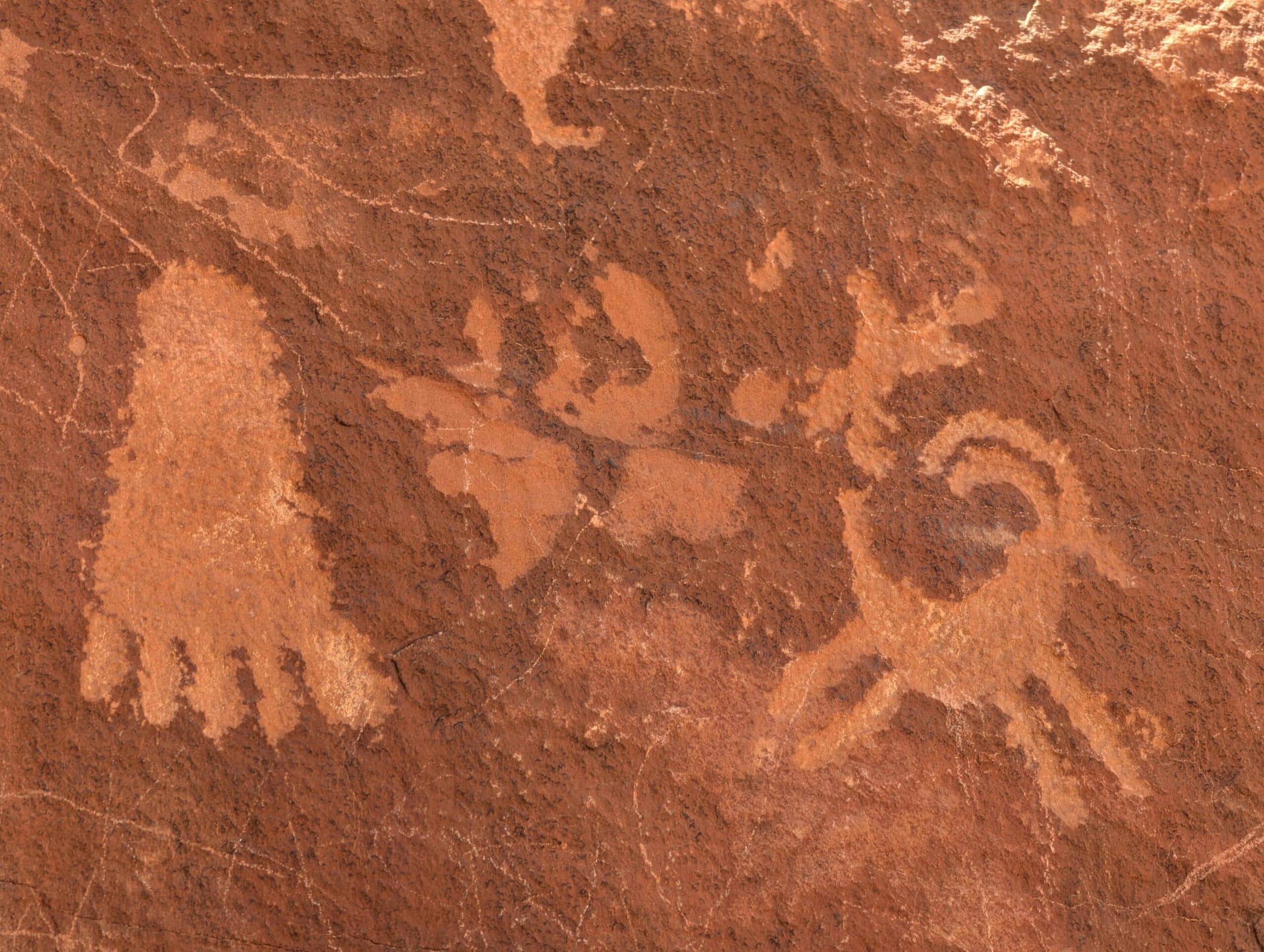


Central Question: How “roaring” were the 1920s?
The 1920s were an age of dramatic social and political change. For the first time, more Americans lived in cities than on farms. The nation’s total wealth more than doubled between 1920 and 1929, and this economic growth swept many Americans into an affluent but unfamiliar “consumer society.” People from coast to coast bought the same goods (thanks to nationwide advertising and the spread of chain stores), listened to the same music, did the same dances, and even used the same slang! The reform movements of the Progressive Era further transformed American society: Women’s role evolved enormously following the right to vote, although Americans clashed over prohibition. Many Americans were uncomfortable with this new, urban, sometimes racy “mass culture”; in fact, for many people in the United States, the 1920s brought more conflict than celebration.
For more background, read “F. Scott Fitzgerald and the Age of Excess” and “Prohibition and its Effects” on the Gilder Lehrman Institute of American History website (free login required), and “The Scopes Trial” on the University of Houston Digital History website.
Scholars understand and can fluently use the following Unit 7 Key Terms:
Scholars understand the key features of society during the 1920s and can explain how “roaring” American society was during this era.
Preparation
Launch (2 minutes)
Read (5 minutes)
Discuss (3 minutes)
Circulate to determine the major trends in scholars’ work.
Homework
Central Question: To what extent did Northern cities provide opportunities for African Americans during the Great Migration?
Amidst the economic boom of the 1920s, more than six million African Americans moved from the rural South to the cities of the North, Midwest, and West from 1916 to 1970. Known as the Great Migration, this mass relocation of millions of Americans had a huge impact on urban life in the United States. Driven from their homes by unsatisfactory economic opportunities and harsh segregation laws, many black Americans headed North, where they took advantage of the thriving economies and the need for industrial workers that first arose during the First World War. As Chicago, New York, and other cities saw their black populations expand exponentially, migrants were forced to deal with poor working conditions and competition for living space as well as widespread racism and prejudice.
For more background, read (or listen to) “Great Migration: The African-American Exodus North” on the NPR website.
Scholars understand and can fluently use the following Unit 7 Key Term:
Scholars can apply their knowledge of United States history to interpret original sources and use these sources to write clear, concise, and compelling claims about the Great Migration.
Read and Write (8 minutes)
Discuss (10 minutes)
Give scholars 2 minutes to revise their main ideas or claims based on the discussion.
Teacher Feedback Guidance
Central Question: To what extent did Northern cities provide opportunities for African Americans during the Great Migration?
Scholars can plan and draft clear and compelling written arguments that answer a historical question with strong theses and evidence that supports or proves their theses.
Outline (15 minutes)
Draft (15 minutes)
Teacher Feedback Guidance
Central Question: To what extent did Northern cities provide opportunities for African Americans during the Great Migration?
Scholars revise their essays based on individualized teacher feedback to make their essays stronger and clearer and understand how to use their feedback to grow as writers.
Preparation
Homework
Central Question: Why were the 1920s called the “Jazz Age”?
Jazz is a music genre that originated among African Americans in New Orleans, Louisiana, in the late 19th and early 20th centuries. During the Great Migration, large numbers of jazz musicians migrated from New Orleans to major Northern cities such as Chicago and New York, leading to a wider dispersal of jazz as different styles developed in different cities. As the 1920s progressed, jazz rose in popularity and helped to generate a cultural shift. Because of its popularity in speakeasies and its proliferation because of the emergence of more advanced recording devices, jazz became very popular in a short time.
Americans from all backgrounds listened and danced to jazz music. The music’s upbeat, unpredictable melodies came to embody the cultural fervor and excitement of the era. This, along with the music’s mass appeal, led author F. Scott Fitzgerald to characterize the 1920s as the Jazz Age.
For more background, read “A New Orleans Jazz History, 1895–1927” on the National Park Service website, and browse PBS’s website about Ken Burns’ film Jazz.
Scholars understand and can fluently use the following Unit 7 Key Term:
Scholars understand the rise of jazz music and can explain why it became an essential part of American society by the 1920s.
Launch (2 minutes)
Watch (12 minutes)
Discuss (6 minutes)
Watch (16 minutes)
Discuss (4 minutes)
Homework
Central Question: How did the Harlem Renaissance transform American arts and culture?
Jazz was just one of the many cultural contributions spearheaded by African Americans as a result of the Great Migration. During the Great Migration, many African Americans moved to Harlem, and together, formed a new movement, called the Harlem Renaissance. Spanning the 1920s and 1930s, the Harlem Renaissance was a literary, artistic, and intellectual movement that kindled a new black cultural identity that ultimately spread far beyond its origins in Harlem. Its essence was summed up by critic and teacher Alain Locke in 1926 when he declared that through art, “Negro life is seizing its first chances for group expression and self determination.” The movement celebrated African American culture — and confronted its hardships — in American society.
For more background, browse the Harlem Renaissance Teacher’s Guide on the Library of Congress website.
Scholars understand and can fluently use the following Unit 7 Key Terms:
Scholars understand the key movements of the Harlem Renaissance and can explain how these movements transformed American arts and culture.
Preparation
Launch (2 minutes)
Read (5 minutes)
Discuss (3 minutes)
Homework
Central Question: Why did the banks fail in 1929?
On October 29, 1929, the booms of the 1920s came to a halting stop. Black Tuesday hit Wall Street, as investors traded some 16 million shares on the New York Stock Exchange in a single day. Billions of dollars were lost, wiping out thousands of investors. In the aftermath of Black Tuesday, the United States and the rest of the industrialized world spiraled downward into the Great Depression, the deepest and longest-lasting economic downturn in the history of the Western industrialized world up to that time. The stock market crash caused banks across the country to fail, as they had lost all their clients’ money in investments that had gone bankrupt. Americans rushed to these banks in hoards, trying to recover their money, only to find that it was gone.
For more background, read “Banking Panics of 1930–31” on the Federal Reserve History website.
Scholars understand and can fluently use the following Unit 7 Key Terms:
Scholars understand why the banks failed in 1929 and successfully simulate how and why bank runs contributed to this bank failure.
Preparation
Launch (2 minutes)
Discuss (3 minutes)
Listen (12 minutes)
Discuss (3 minutes)
Homework
Central Question: How did the Great Depression affect the quality of life for Americans across the country?
The failure of the banks and the stock market crash sparked the Great Depression, the deepest and longest-lasting economic downturn in the history of the Western industrialized world. Over the next several years, consumer spending and investment dropped, causing steep declines in industrial output and rising levels of unemployment as failing companies laid off workers. By 1933, when the Great Depression reached its nadir, some 13 to 15 million Americans were unemployed, and nearly half of the country’s banks had failed. Although the relief and reform measures put into place by President Roosevelt helped lessen the worst effects of the Depression, the economy would not fully turn around until after 1939, when World War II jump-started American industry.
For more background, read “Dorothea Lange and the Great Depression” and “Women and the Great Depression” on the Gilder Lehrman Institute of American History website (free login required).
Scholars understand and can fluently use the following Unit 7 Key Terms:
Scholars understand the national extent of the Great Depression and can explain how the Great Depression affected various regions in different ways.
Preparation
Launch (2 minutes)
Listen (3 minutes)
Discuss (5 minutes)
Homework
Central Question: To what extent was the New Deal a success?
Although President Herbert Hoover urged patience and self-reliance, by 1932, one of the bleakest years of the Great Depression, at least one-quarter of the American workforce was unemployed. When President Franklin Roosevelt took office in 1933, he acted swiftly to try and stabilize the economy and provide jobs and relief to those who were suffering. Over the next eight years, the government instituted a series of experimental projects and programs, known collectively as the New Deal, which aimed to restore some measure of dignity and prosperity to many Americans. More than that, Roosevelt’s New Deal permanently changed the federal government’s relationship to the U.S. populace.
For more background, read “What Did the New Deal Accomplish?” on the Gilder Lehrman Institute of American History website (free login required).
Scholars understand and can fluently use the following Unit 7 Key Terms:
Scholars can apply their knowledge of U. S. history to interpret original sources and use these sources to write clear, concise, and compelling claims that evaluates the success of the New Deal.
Read and Write (8 minutes)
Discuss (10 minutes)
Give scholars 2 minutes to revise their main ideas or claims based on the discussion.
Teacher Feedback Guidance
Central Question: To what extent was the New Deal a success?
Scholars can plan and draft clear and compelling written arguments that answer a historical question with strong theses and evidence that supports or proves their theses.
Outline (15 minutes)
Draft (15 minutes)
Teacher Feedback Guidance
Central Question: To what extent was the New Deal a success?
Scholars revise their essays based on individualized teacher feedback to make their essays stronger and clearer and understand how to use their feedback to grow as writers.
Preparation
Homework
Teacher Feedback Guidance
Central Question: How did the New Deal affect American society over time?
The New Deal did not end the Depression nor did it significantly redistribute income. It did, however, provide Americans with economic security that they had never known before. The New Deal legacies include unemployment insurance, old age insurance, and insured bank deposits. The Securities and Exchange Commission protected stock market investments of millions of small investors. The Civilian Conservation Corps (CCC) and Works Progress Administration (WPA) created environmental and infrastructural projects that still stand today. The Federal Housing Administration and Fannie Mae enabled a majority of Americans to become homeowners. The New Deal’s greatest legacy was a shift in government philosophy. As a result of the New Deal, Americans came to believe that the federal government has a responsibility to ensure the health of the nation’s economy and the welfare of its citizens.
For more background, read “The New Deal: Then and Now” on the Gilder Lehrman Institute of American History website (free login required).
Scholars understand and can fluently use the following Unit 7 Key Term:
Scholars understand the impact of the New Deal and can explain how it affected American society over time.
Preparation
Launch (2 minutes)
Discuss (3 minutes)
Prompts: Scholars may choose one of the following prompts about big ideas in American history.
Project Menu: Scholars may then choose to respond to the prompt chosen above with one of the formats outlined below. If scholars choose to propose their own project format, they must submit a proposal to you for approval before beginning the assignment.
resources
Access a wide array of articles, webinars, and more, designed to help you help children reach their potential.
Curated Middle School Novel List (Grades 5-8)
Educator
Parent
Book lists
Book Lists
Middle School
5th
6th
7th
8th
Literacy

ES PBL Grade 2: Brooklyn Bridge
Educator
Curriculum
Elementary School
2nd
PBL

ES PBL Grade 3: Iroquois and Lenape
Educator
Curriculum
Elementary School
3rd
PBL

Grade 1: PBL School – How It Works!
Educator
Curriculum
Elementary School
1st
PBL
NEWSLETTER
"*" indicates required fields
